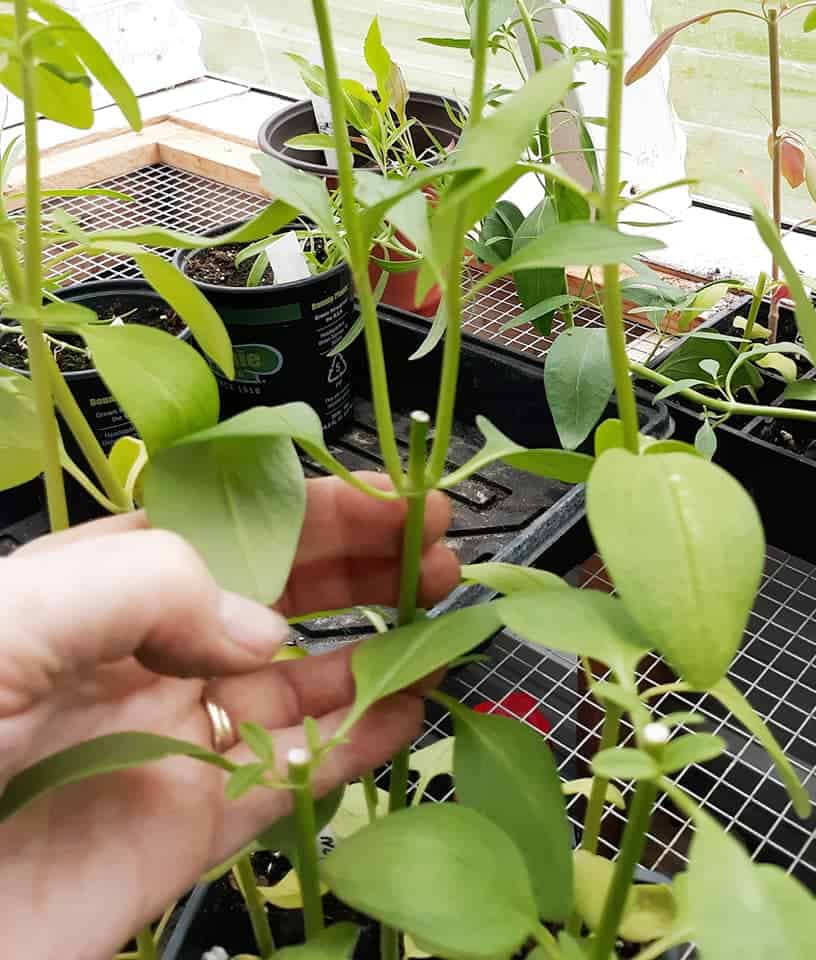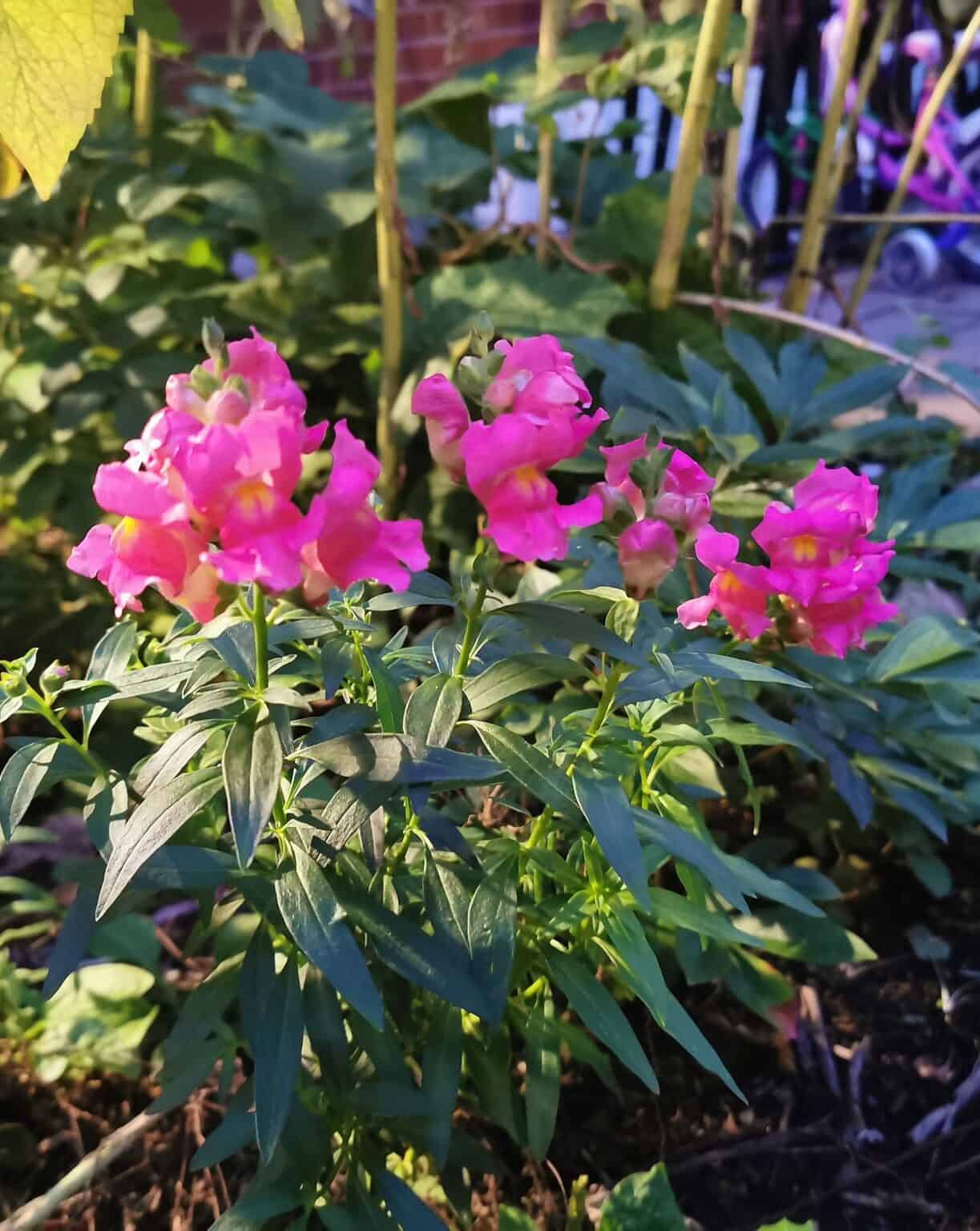From the day I got myself a Snapdragon plant, I was an instant fan. I wanted many of them in my house and found out that propagating Snapdragons is the most inexpensive, easy method.
Propagating Snapdragons is not a challenging task.
So, let me guide you on the journey to propagate Snapdragons and all the associated things.
Table of Contents Show
Why Propagate Snapdragons?
You don’t always need ulterior motives for propagating a plant.
Sometimes, you could just talk with your friend over tea, look at your Snapdragon plant, and think, “I need to propagate this.”
However, there are other motives for propagating Snapdragons!
- Snapdragons may be rootbound and have stunted growth, indicating they need propagation.
- The propagation through stem cutting helps transfer the inherent qualities from parent plants to daughter plants.
- Taking cuttings of the Snapdragons for propagation promotes the plant’s health by casting the bushy weight.
- The plant division helps prevent overcrowding of Snapdragons.
- When growing Snapdragon seeds, the baby plant develops different characteristics.
- Propagation can be a hobby to add to your repertoire at gardening.
If the propagation of Snapdragons is done at the right time, the plants have a faster and better success rate in growing and populating.
When to Propagate Snapdragons?
Snapdragon cuttings and seeds can grow up to be a bunch of beautiful plants if they are planted at the right time and right season.
But, that particular factor, the timing, is essential. If you propagate your Snapdragon during the off-season, you may fail miserably.

As Snapdragons are considered ‘self-seeding’ plants, you may not have to propagate Snapdragon seeds manually. But if you want to have monitored growth, you need to prevent self-seeding.
It would be best to choose the spring months because the plant can grow full-fledged. In winter, you have a better chance of killing the plant.
If you want to grow the Snapdragon plants from seeds, it is best to seed them indoors one and a half months before the last frost date.
You may want to check the last frost date. Go to Almanac and enter your postal code to get the first and last frost date.
How Do You Propagate Snapdragons?
So you made the wise decision of going on with the propagation? This is a decision you will not regret.
To propagate Snapdragons properly, you must follow certain concrete rules to ensure the process goes smoothly.
Gather the following materials for propagating Snapdragon.
| Tools | Specifications |
|---|---|
| Mesh Colander | To strain and separate the seeds |
| Gardening Knife | To make a suitable layering cut |
| Toothpicks | To pick up seeds and placing them for germination |
| Low Nutrient Substrate | To provide a suitable substrate for germinating the seeds |
| Plastic Wrap | To cover the stem cuttings |
| Organic Perlite | To aid extra aeration for the cuttings in the potting mix |
| Terracotta Pots With Drainage Holes | To root the cuttings |
| Seed Tray | To place the seeds for germination |
| Gardening Gloves | To protect the hands during the process |
| Shovel | To dig up the soil |
| Disinfectant | To sterilize the pruning tools |
| Pruners | To cut the sections for propagation |
| Liquid Fertilizer | To fertilize the cuttings |
| Rooting Hormone Powder | To help the cuttings develop roots |
1. Propagation via Stem Cuttings
Propagating Snapdragons via stem cuttings may be the easiest and most convenient method.
Look closely from the beginning to read the process without going astray!
Get the Cuttings
- The first step is to choose disease and pest-free, healthy Snapdragon plants to get a stem cutting.
- Choose a healthy section for the cutting you need to make.

- Look for the swollen leaf node and cut 2-3 inches below the node.
- Make the cutting early in the morning when the plant is fresh.
- You can take multiple cuttings from a single Snapdragon plant but do not overdo it. Otherwise, the parent plant may die.
You can also soak the cutting for at least 24 hours before planting them.
Rooting in Water
- Get a transparent jar and fill 75% of it with distilled or rainwater.
- Take the cutting, remove all the leaves at the bottom and dip the cuttings end in rooting hormone to get quick rooting.
- Submerge the cutting in water. Ensure the nodes are inside, but the leaves need not touch the water.

- Cover the vase with a transparent plastic bag, poke some holes, and place the jar in a warm location with good sunlight.
- Make sure to change the water in the jar every seven days.
- After about two to three weeks, you can witness the roots. The cutting is now ready to transplant into soil.
If you place the jar in a greenhouse with a temperature ranging from 62-68°F and a humidity of 100%, you may notice quick rooting.
Rooting in Soil
- Take a deep container and fill 80% of it with a neutral, good-quality potting mix.
- Grab the cutting and remove the leaves at the bottom. Dip the cutting in the rooting hormone.
- Poke a tiny hole in the middle of the potting mix and plant the cutting there.
- Dab the soil around the cutting with your hand to make it stand firmly.
- Water the soil thoroughly to make the soil moist, and place the plant in a location with bright, indirect sunlight.
- In about one to two weeks, the Snapdragon cutting will root. Resume your usual care after that.
- Make sure the cutting is getting enough moisture for its better growth.
You need to ensure the cutting is getting a good environment for growth, or it will get transplant shock.
2. Propagation via Root Division
Although people are usually not a fan of this method, you can follow this process if your Snapdragon has grown to be very big for the pot to handle.
The following points will be your guide!
- Choose the mature Snapdragon plant you want to propagate.
- Dig up the plant entirely carefully without disturbing its roots.

- Check the root ball carefully and discard the roots that have gone bad.
- Make divisions by pulling the rootball using your hands. Make sure each root division has at least one foliage.
- The number of divisions you make depends upon the rootball size you have.
- Plant the rootball in fresh potting soil, cover the division root with soil properly and place the pot in a sunny location.
The best time to divide your Snapdragon for propagation is during the late summer.
We advise you not to store the root scions more than two days before planting.
Give the scions a good soak for one hour before planting them in the pot if you store them.
3. Propagation via Seeds
Seed propagation is the least favourite method of propagation of Snapdragon.
The first step you should know is how to extract the seeds for propagation. Guess what? We have a whole article on extracting Snapdragon seeds.
Long things short, you need to collect the dried seed pods and shake them gently to get the seeds.
Look below for the process of collecting the seed and propagating Snapdragon.
Prepare the Seed and Seed Mix
- Snapdragons have a better shot at germination during the cooler seasons.
- Get a fresh seed-starter mix and fill the compartments of the seed germination tray.
- If you have stored the seeds, I advise you to soak them for 12-24 hours before planting them.
Sowing the Seeds
- Germinating Snapdragon seeds is easy. You can just sow the fresh seeds in the garden and get the desired growth.
- For trays, sprinkle the seeds on the surface of the potting mix.
- Ensure not to cover the seeds, as they will not grow without sunlight.
- Mist the seeds sparingly to provide them with the moisture they need.
- Place the germination tray somewhere it gets about 60-65°F temperature.
- Keep a grow light 3-4 inches above the tray for about 16 hours daily.
- In about 15 days, the seed will start to sprout.
Get some propagation of Snapdragon through seeds from the video below!
Tips to Care For Snapdragons After Propagating
Even after transplanting the seedling to a pot, your job is just half done. You need to care for the plant to get a good Snapdragon.
Look below for the tips to care for newly potted or planted Snapdragon.
- Do not let the soil go completely dry for the first few weeks.
- Maintain the temperature to around 55-65°F for proper growth of the seedlings.
- Keep the new plant in full sun to partial shade. But do not overdo the lighting, or your plant will incur stress.
- Offer enough sunlight by placing the propagated plants near a window or grow light for 16 hours.

- Ensure the soil mix you have offered is well-draining and the pot has good provisions for draining.
- The humidity must be higher (above 40%) around the newly potted Snapdragon.
- Use a balanced houseplant fertilizer with the NPK 10-10-10 once the sapling is a few weeks old.
- Pinch and remove the top of the stem to promote vigorous stem and branch growth.
You must be on guard for any problems your seedling may encounter to have better growth.
FAQs About Propagating Snapdragons
Look below for the few questions associated with propagating Snapdragons.
Can You Collect Snapdragon Seeds from Cut Flowers?
As discussed in the above section, collecting Snapdragons seeds is relatively easy.
You can also collect the seeds from cut flowers, but you need to do it before the seed pods form holes.
After the pods form holes, the tiny seeds may fly away even after a minor disturbance.

So, collect the flowers after they wither and gather the seed pods to extract the seeds as you prefer.
Do Snapdragons Spread?
Propagating Snapdragons is a task that you may skip altogether. Nature does that for you.
The individual seeds of Snapdragon weigh about 230 micrograms. So, they are easily dispersed by wind, and thus they propagate.
However, if you want to control Snapdragon growth, removing the seed pods before the wind does its work is better.
Editor’s Note
Propagating Snapdragons is an easy task if you are up to it. There are some reliable methods you can choose from based on your convenience.
The best method that worked out for me was stem cuttings. However, it can differ for you. May you choose the best one.
Good luck!
